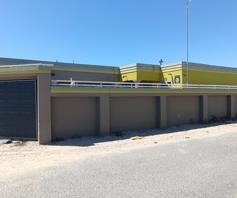Savvy investors and agents have been speculating that Cape Town’s Durbanville was set to undergo a sustained regeneration/upliftment period, and the most impressive changes now taking place are not in the residential sector, which has always been known for its affluent homes, but in the business and retail areas.

“Durbanville has always been known for its quality homes, some now valued at as much as R16 million or more, but its business retail CBD had a rather old, quaint village ambience, charming but not at all sophisticated and with no focal point,” say Garth and Terence Hewitt, agents with Alexander Swart Property’s Durbanville team.
The agents say people on ‘serious’ shopping outings tended to travel out of Durbanville, for example to Willowridge and Tyger Valley, now this is all changing rapidly.

“The new Village Square Shopping Centre and ongoing upgrades to Vida Road and many of the Wellington Road properties have given us an enlarged, more modern central business node. Here we have the largest Woolworths food store in the Western Cape, a smart upgraded Shoprite Checkers complex and a new Storage RSA building,” they say.
“In addition, at Koeberg Road we have one of the most aesthetically appealing of all the Cape’s retirement centres. And we know that in the coming 18 to 24 months we will see substantial new development taking place, especially in those areas close to the new university - which more than any other factor will result in further upliftment of the whole town.”

In the educational field, complementing excellent state schools, both primary and secondary, Durbanville now has a Reddam private School at Clara Anna Fontein and a Dot’s Learning Centre at Uitzicht.
Rowan Alexander, Director of Alexander Swart Property, says the changing nature of Durbanville and its ability to attract a wide variety of buyers in all age groups is revealed by the latest Lightstone figures.

These show that the average combined incomes of Durbanville households is now between R70 000 and R90 000 - which places it in the highest of all SA residential categories, on a par with Somerset West, Cape St Francis and Knysna. Equally significant is the statistic that 32% of all homeowners in Durbanville have lived there for five or less years, meaning one in three residents is a new arrival in the town. What is more, the largest group of new buyers (42% of the total) is in the youth/adult group, in other words, buyers aged 18 to 35.
“Looking at the current trends, it is clear that Durbanville is now more popular than ever before, and it is fairly safe to predict that the 24 802 residential properties in Durbanville will increase to 30 000 within five to ten years,” says Alexander.
“This has become a high growth precinct, and one in which the quality of almost all new buildings, whether residential or commercial, is immediately obvious to visitors.”

At the moment, the Hewitt brothers say home prices at Durbanville are still ‘affordable’ - by any recognised standards - and although it is seen by the public as an affluent suburb not suited to those on ‘average’ salaries, not all residents fall into the income bracket quoted above. The vast majority of home sales are still in the R2 million to R4 million bracket, while in the sectional title market it is still possible to buy a well-appointed two bedroom apartment for R1.2 million, they say.
The Hewitt brothers add that a greatly improved political outlook is imparting new confidence to formerly hesitant home buyers, which bodes well for the Durbanville property market.








